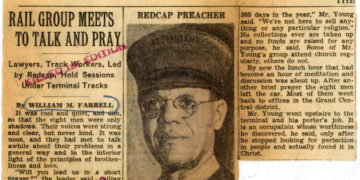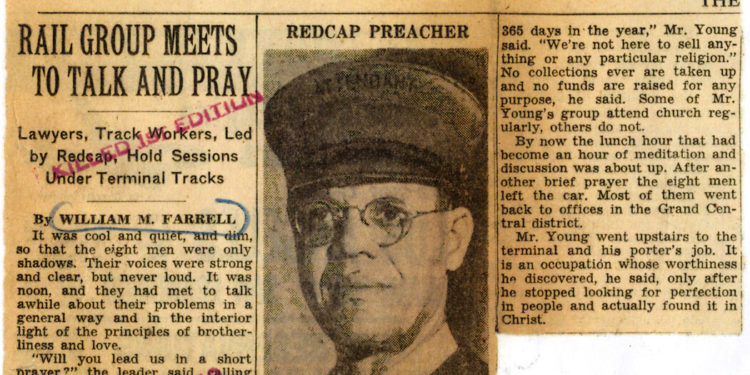Although The New York Times is known as the newspaper of record, many of its stories, vast swaths of printed history, are forever lost, existing, if at all, only in the minds of some particularly savvy readers.
Before the internet, each day’s paper usually existed in archival form, preserved on microfilm or stored in one of the newspaper’s vast repositories, or both.
But not every article was saved.
The Times publishes more than one edition every day. Before the digital age, later editions were updated to incorporate breaking news, or include more detailed reporting on an event. This meant that certain stories were either heavily cut or removed altogether as the news of the day evolved. And since those early editions of The Times weren’t scanned onto microfilm, some of the news featured on those pages was not preserved.
Only a single known copy exists of an article that ran in an early edition in February 1949 under the headline “Rail Group Meets to Talk and Pray.” Written by William M. Farrell, it focused on a 52-year-old porter, or Red Cap, named Ralston Young, who assisted passengers with their luggage at Grand Central Terminal. He led groups in prayer and conversation several days a week, in a railroad car on Track 13, “which in its dimness was as anonymous and unworldly as the men themselves,” Mr. Farrell wrote. The article, preserved as a physical clipping in the Morgue, The Times’s clippings library, featured a photograph of Mr. Young.
More than three years later, in October 1952, another article profiling Mr. Young appeared in The Times; this one, which referred to him as “the Bishop of Grand Central,” was published without a byline or photograph. But it appeared in the final edition, and was preserved on microfilm.
The prolific reporter Gay Talese had at least a couple of stories either killed or greatly altered between editions. In one, written in September 1964, he reported on flocks of fans attending a Beatles concert at the Paramount Theater in Midtown Manhattan. Many colorful details of the scene — a 17-year-old boy possibly mistaken for a Beatle was mobbed by the crowd while crossing 42nd street — were cut for space between editions.
Additionally, The Times published a special Brooklyn edition of the paper from the mid-1920s to the 1940s. None of those New York City-specific editions were saved on microfilm, meaning that the news as it was chronicled in those papers is perhaps forever lost to time.
The post The Stories That Aren’t Archived appeared first on New York Times.



















